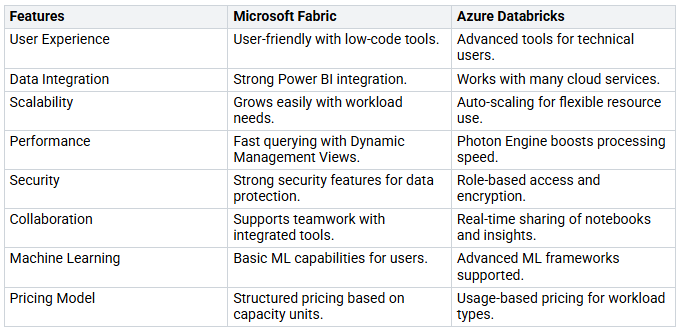A Comprehensive Comparison of Microsoft Fabric and Azure Databricks
Key Features and Performance Insights
Explore the differences between Microsoft Fabric and Azure Databricks.
In today's world, data is very important. Choosing the right analytics platform is key for success. Organizations often struggle between Microsoft Fabric and Azure Databricks. Each platform has special features for different users. For example, Mic…


